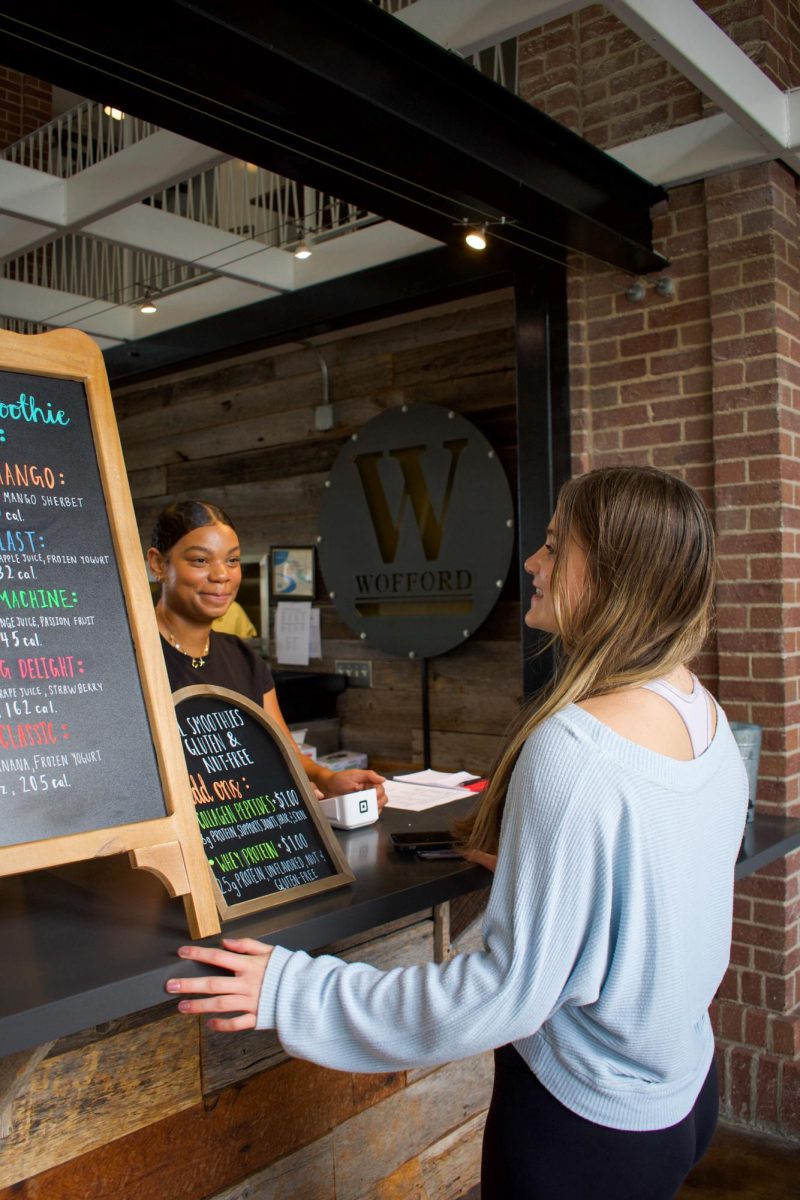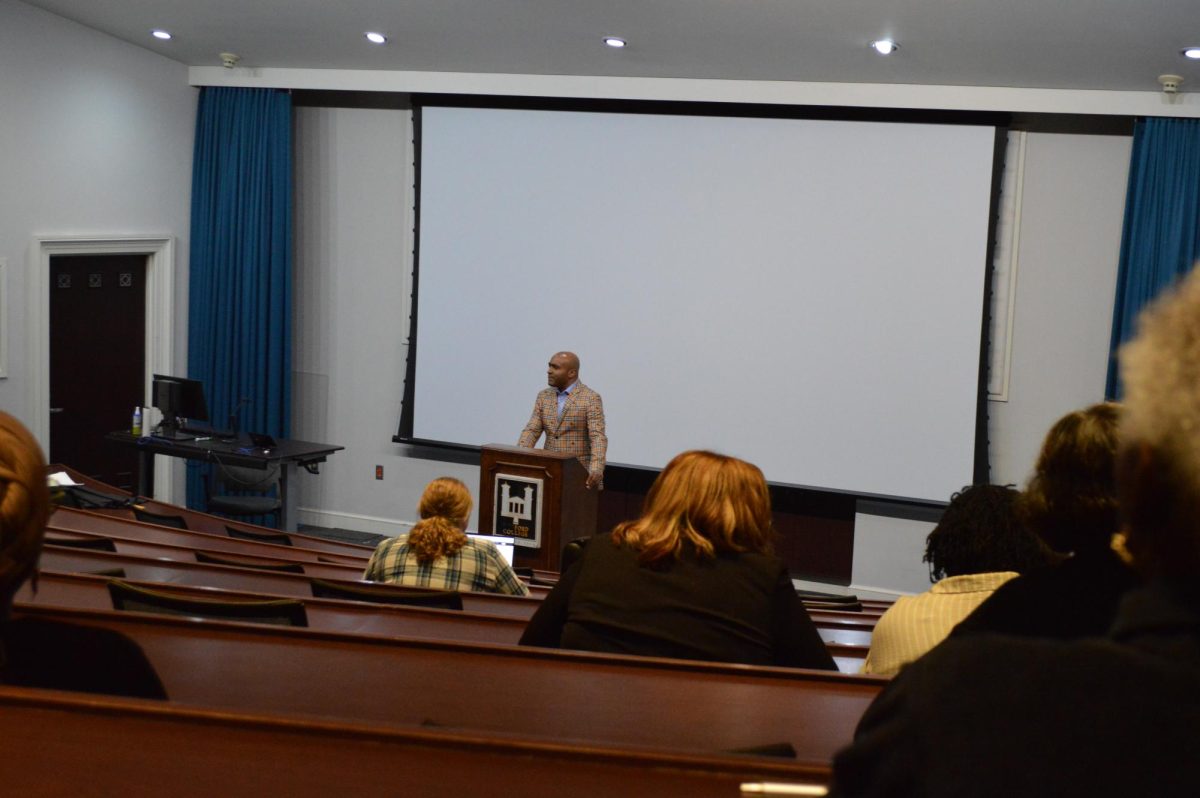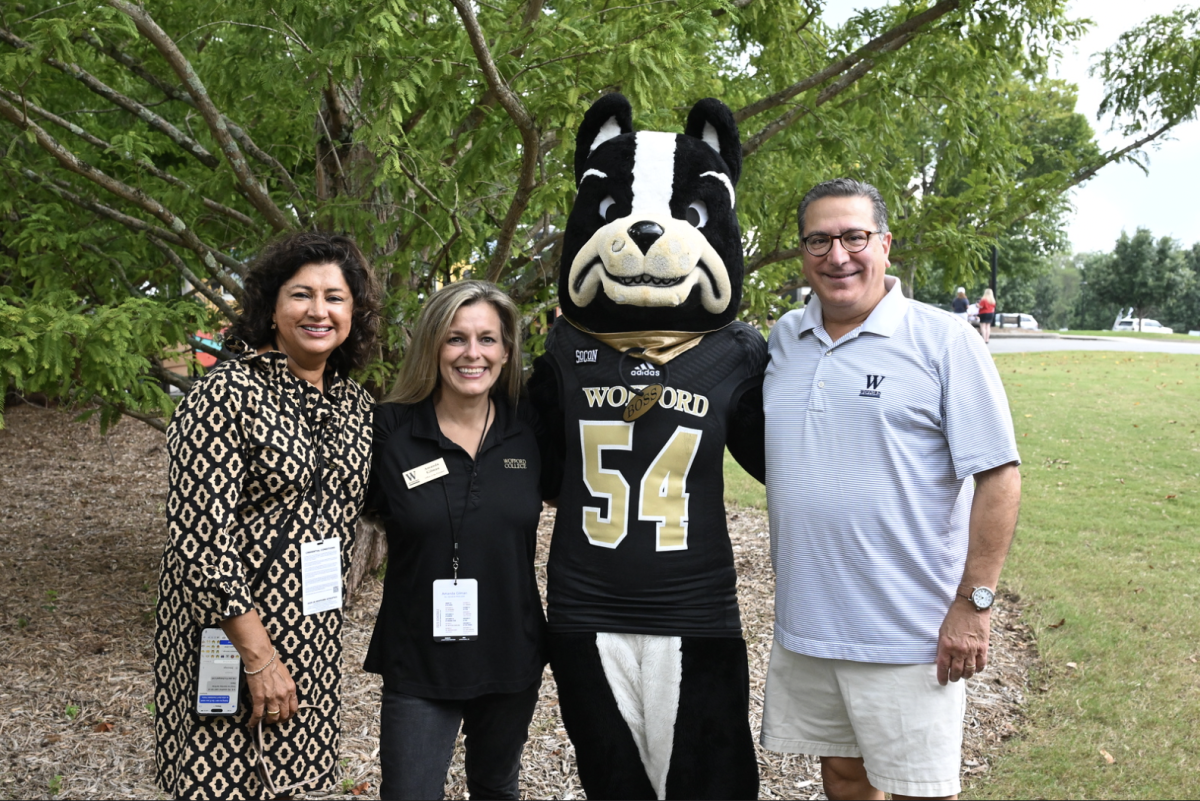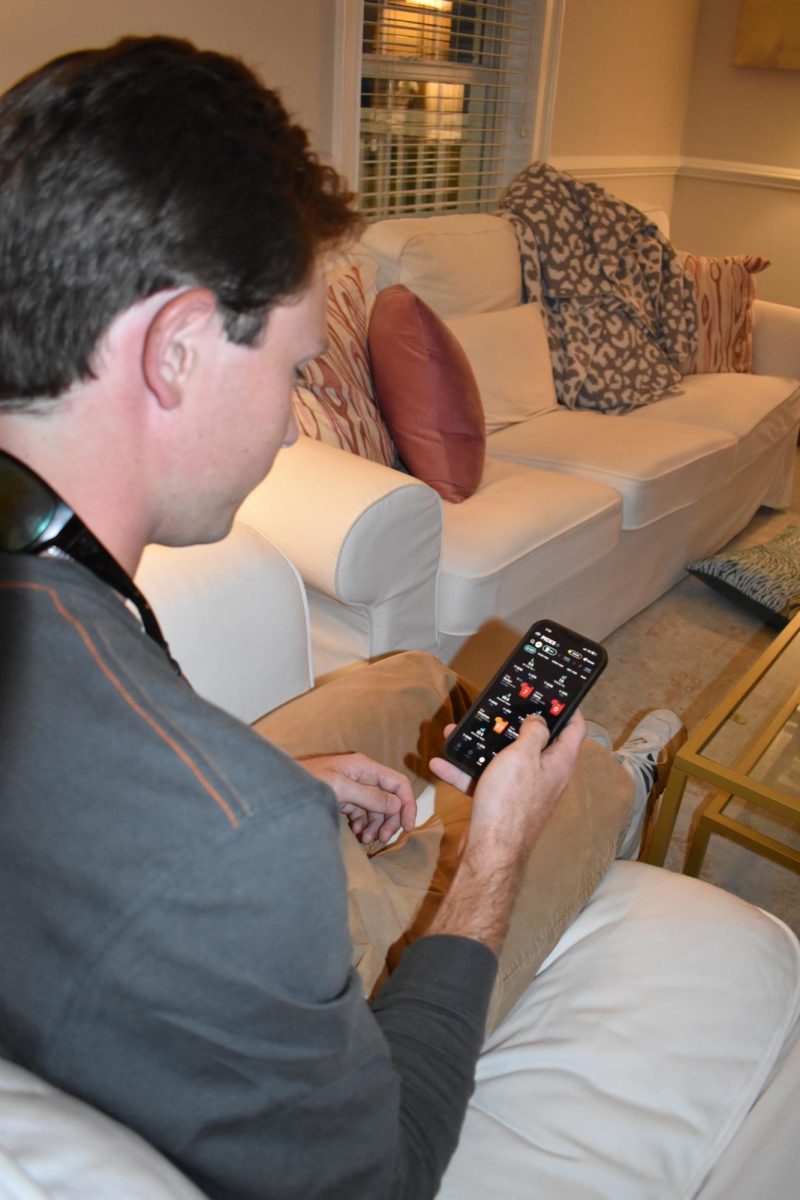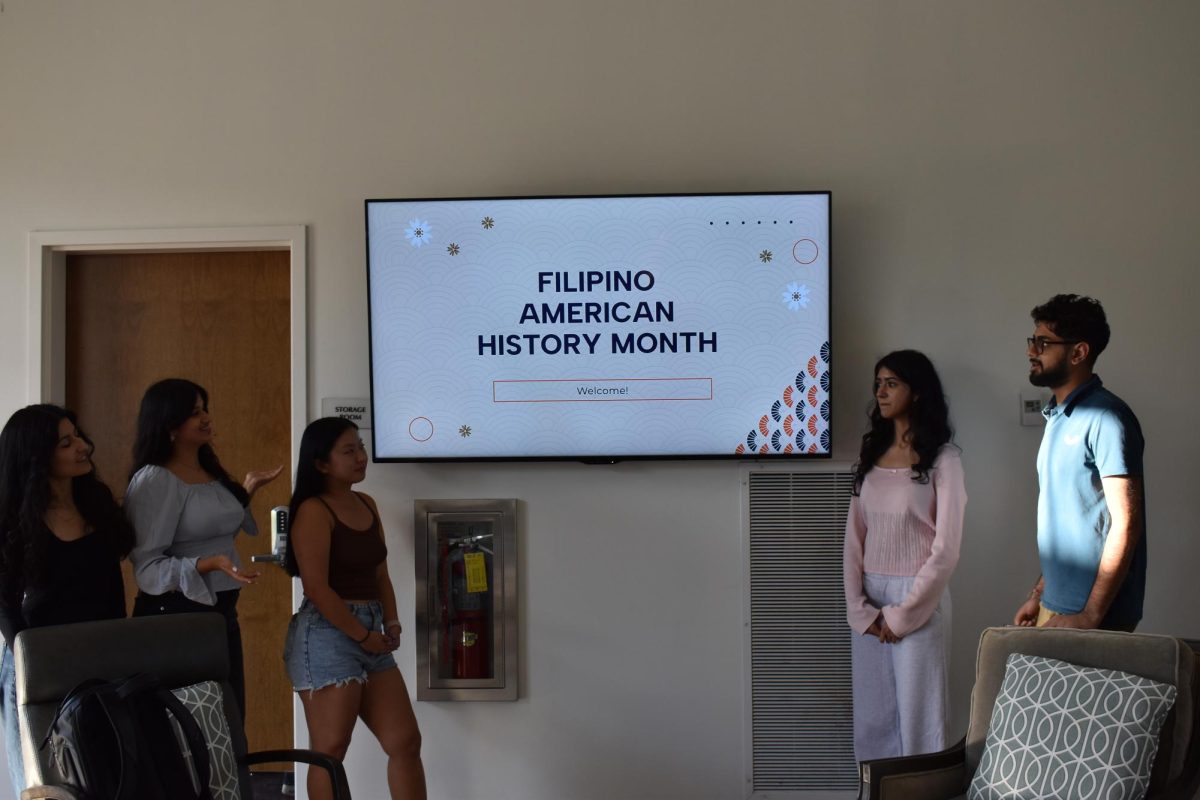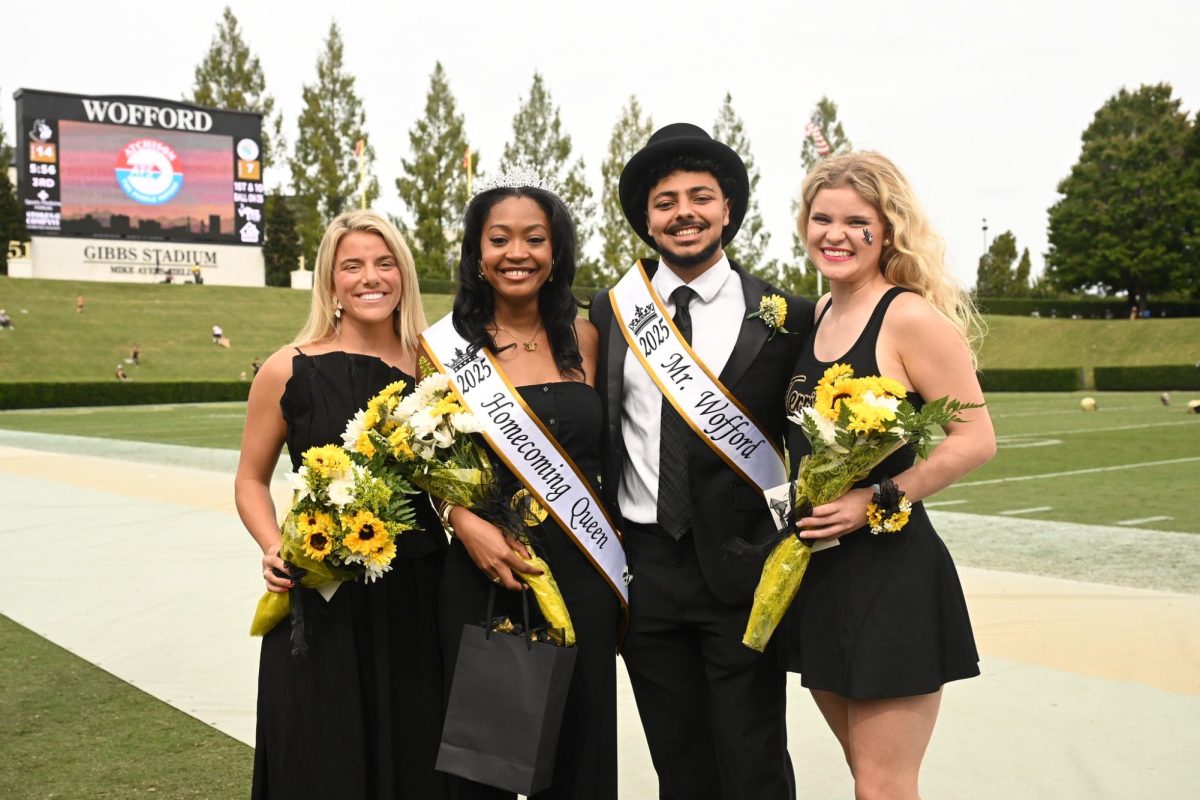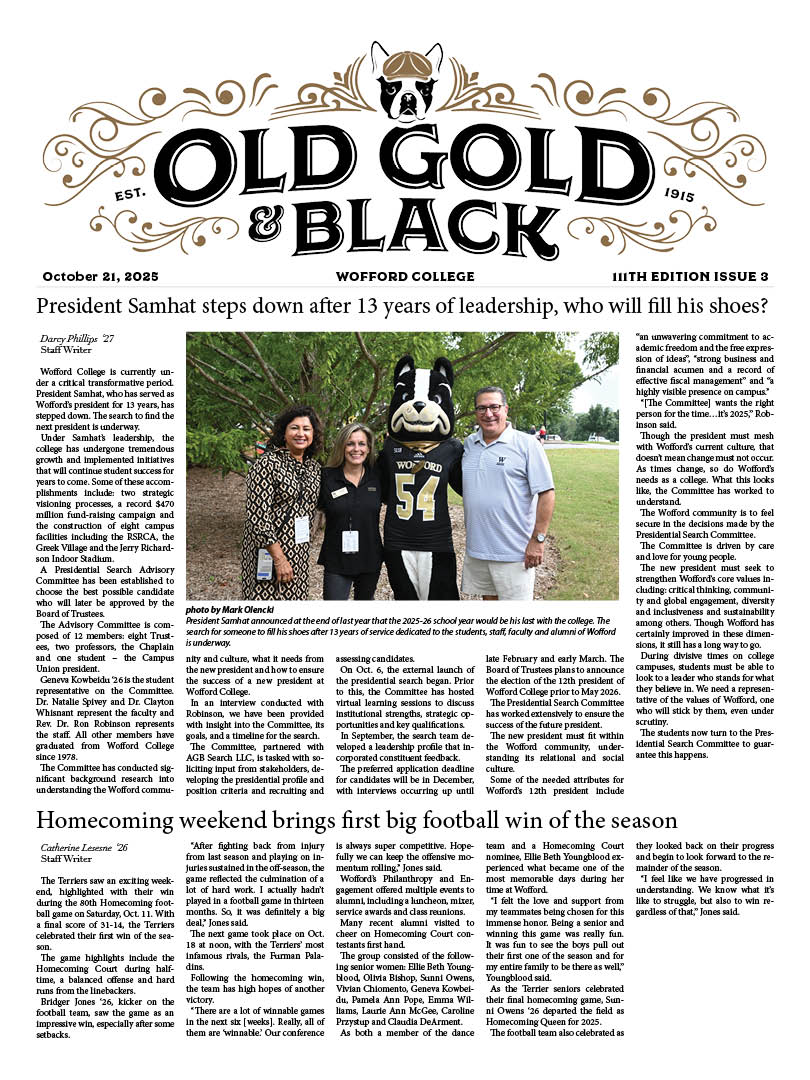By: Jonathan Franklin, Staff Writer and Savanny Savath, Staff Writer
“‘Am I an athlete?’ should not be the first question people ask me when I say I attend a predominately white, private institution,” says freshman Tywone Greene.
Students of color such as Greene and many others have at one point during their Wofford experience encountered some sort of racism or discrimination toward them, thus shaping their view on others and how the institution handles these issues.
Freshmen Alex Harlak recalls his first tour and impression of Wofford’s campus.
“The sports program definitely has lots of different people from all different areas of the U.S. If you are not on the athletic team, then the sorority and fraternity life appeal more to you. I don’t know. That is kind of the main things here. Those are the two things—athletics and Greek life—
that were apparent to me when I showed up to visit the athletics department. [In the end] you are either in athletics or in a fraternity or sorority,” says Harlak.
Senior Tyler Woolley agrees.
“Wofford is not diverse. According to a pie chart about diversity on campus, 80 percent of Wofford is white, with only eight percent being African American. The next largest ethnicity is three percent, which is tiny. Also, I bet a large number of the African American students are athletes,” says Woolley.
On the other hand, Harlak believes the Wofford community is diverse.
“Oh yeah, Wofford is diverse. You see a bunch of different people around here. It is a really good school. You see lots of people from every walk of life, even from different countries. It’s pretty cool,” says Harlak. “On the other side though, you can say [Wofford] is a bunch of rich kids from South Carolina.”
Whether some students view Wofford as diverse or not diverse, they note some problems regarding representation of multicultural students who are on campus. One of those problems is racism.
“This semester I have a class where a professor called the corner of Black people the ‘amen corner’ and said she couldn’t tell the difference between the Black students because they all were wearing cornrows. None of us were wearing cornrows. Another day the professor accused us of cheating after similarly wording the correct answer on the quiz,” says sophomore Helen Strickland.
Sophomore Caitlynn Myer also has had experiences with discrimination within the classroom similar to Strickland.
“My first semester in biology class at Wofford I had a girl in my lab group redo my work that I contributed to the group for our poster as if I couldn’t do it or wasn’t capable of doing the work,” says Myer.
Racism is noted in different forms of the campus culture as well.
“Since Wofford is mostly white, we have a plethora of republicans and Christians on campus. I’m a democrat, and I definitely feel like a minority. Just wearing my Bernie Sanders pin on my backpack makes me feel like a renegade walking around campus. This is almost a direct link to the lack of racial/ethnic diversity on campus,” says Woolley.
Another problem of representation that students noted is the advertising or publicity of multicultural organizations.
“I wanted to know more about acculturation and multicultural students, but I have never really heard much about [the organizations]. I know [they exist], but I don’t know what they do or anything like that. With Black Student Alliance, I don’t hear a lot about it. I went to a meeting, but I have not heard of anything since. Maybe if I heard more, I would be more inclined to do something with them,” says freshman Brianna Ashford-Carroll.
“I feel like a lot of the people who contribute to the diversity are on athletic teams and that takes up a lot of their time to [be able to] go to the meetings or something like that. On the other hand, it’s not publicized very well like about the meetings. I have never heard about any meetings or really anything,” says freshman Ross Hammond.

